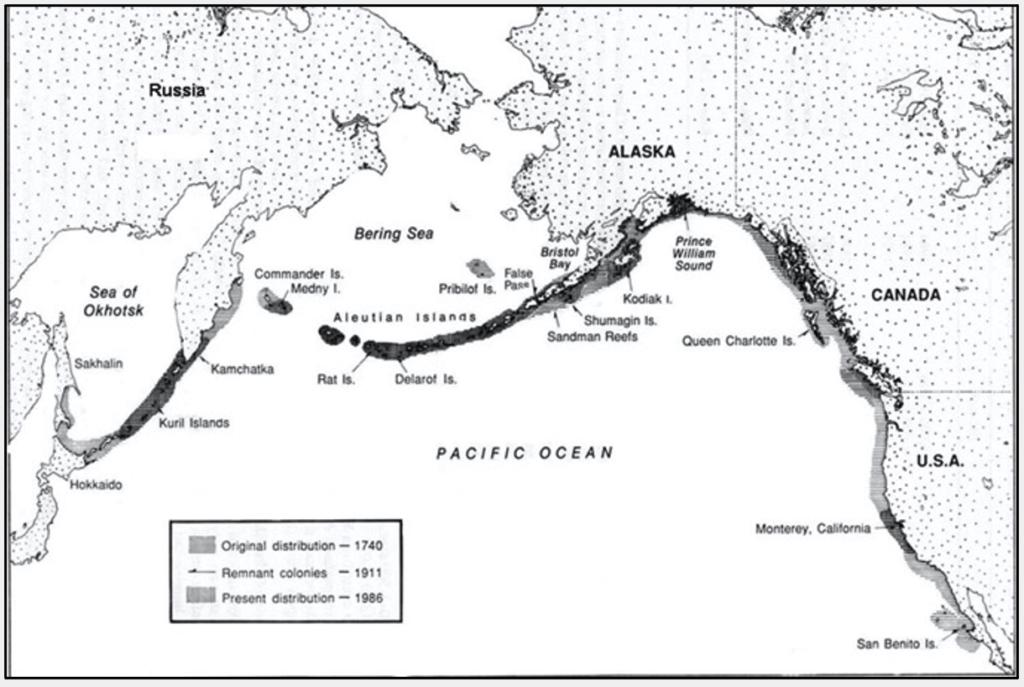Introduction
In addition to the pre-read material below, before your lab meets this week, make sure to watch the film “BIodiversity Is Us” and complete the video questions. You will find the video linked in this week’s Canvas module.
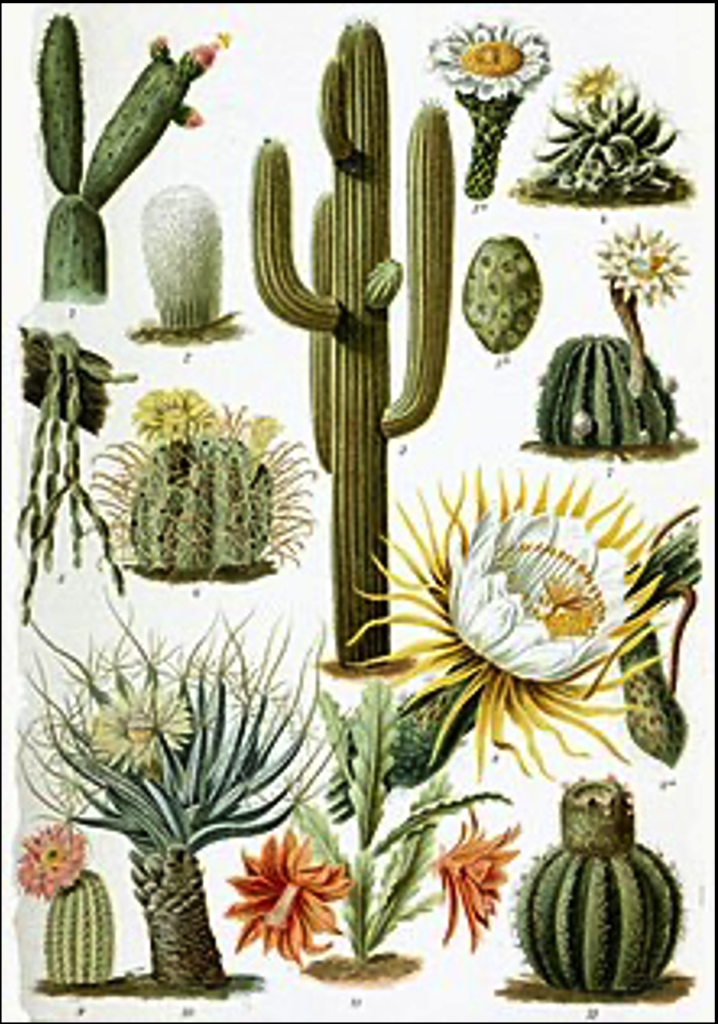
The word biodiversity is a contraction of the phrase “biological diversity” and was first coined in 1985 by Walter Rosen of the National Research Council. Biodiversity is simply the variety of life on Earth, but its importance to global ecology has made it one of the most important concepts in modern science. Because biodiversity cuts across different levels of organization it is often useful to focus on a particular type of biological diversity.
Species diversity is a measure of how many different species are present in a given area. Most often when people think of biodiversity they think of species diversity.
Genetic diversity measures the amount of inherited genetic variability contained within a populations of species. Even when species are not extinct, their survival can be severely compromised if genes that confer specific survival traits such as disease resistance or environmental tolerance are lost when population size is decreased by habitat fragmentation or other effects.
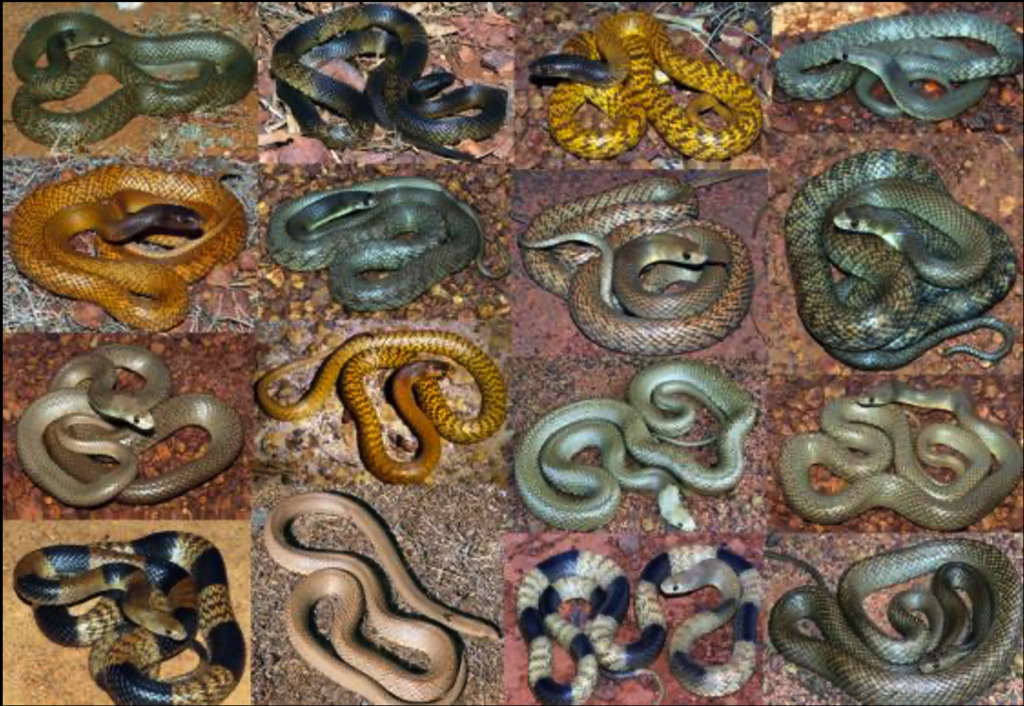
Ecosystem diversity describes the variety of communities or habitats that exist. Ecosystem diversity is much harder to measure because the boundaries of many communities or habitats are not usually fixed like that of a pond, but rather they gradually change from one type to another over a transition zone.
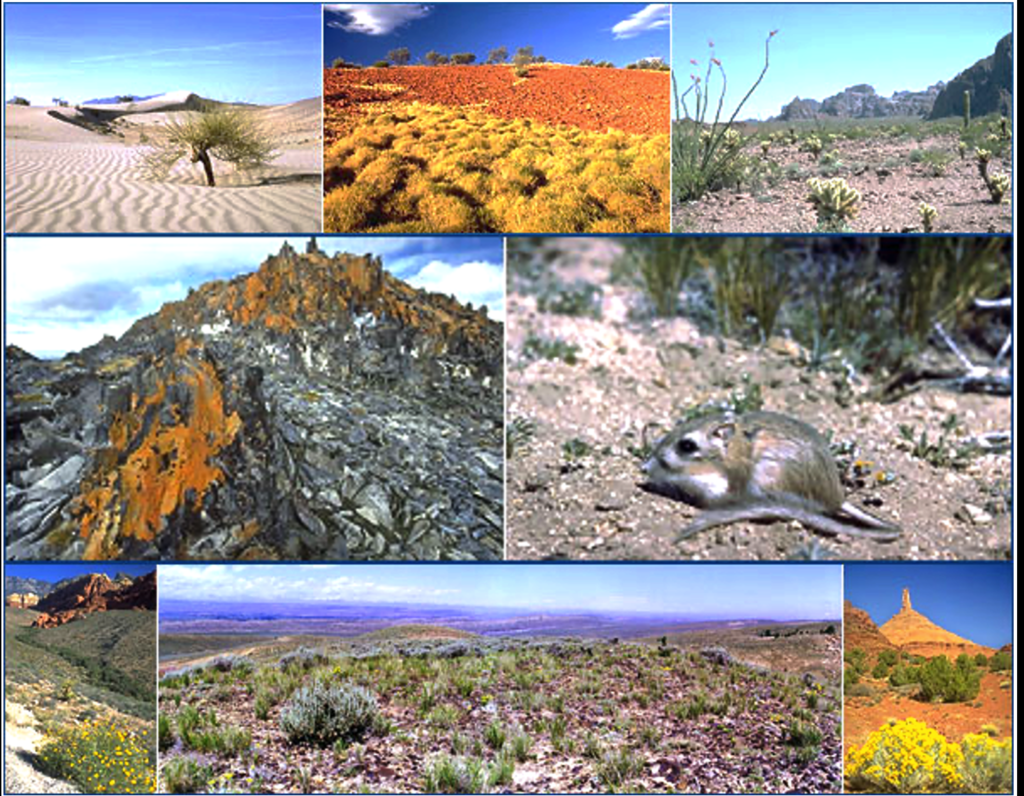
Estimates of the total number of species vary considerably from 3 million to 30 million, but most estimates put the range between 5 and 10 million (Wilson, 1999). Each year about 13,000 species are discovered and added to the 1.9 million species that have been catalogued so far. The majority of new species are invertebrates, plants, and bacteria, but even large vertebrates are still being discovered. It has been estimated from catches examined in Amazon fish markets that as much as 40 percent of South American freshwater fishes are still not identified.
Mathematically the two components of biodiversity are richness and evenness. Richness is a measure of how many organisms exist in a given area. Evenness measures whether each species in a community is represented by about the same number of individuals, or whether one or two species have very large populations and other species have smaller populations. Two communities could be equally diverse in numbers of species but differ greatly in terms of evenness.
Species can be considered to have instrumental or inherent value. A species would have instrumental value if it was useful to humans, for example it can be used to create life-saving medicines, or it is aesthetically beautiful. A species would have inherent value if it had some worth apart from its usefulness, for example simply because it exists on the planet. It is extremely difficult to attach a monetary amount to inherent values.
Inevitably the debate surrounding the preservation of biodiversity hinges not on science but on ethics. The decisions about how much land should be preserved in order to preserve biodiversity are typically based on value rather than function or on ethics. Clearly all decisions are not based on pure economic value. Biodiversity has a great social, ethical, and cultural, value to humans. Examples of this are preserved in our religion, art, and literature. For example, John Muir’s great success in garnering public support to preserve large tracts of the American west was due mostly to the aesthetic appreciation that humans have in nature. This appreciation is still apparent today through the public’s support of parks and zoos, and nature and conservation organizations.
Text credit: Medland, Vicki L. (2004). Biodiversity. Encyclopedia of World Environmental History, pp. 125–131. Great Barrington, MA: Berkshire Publishing Group.
Food Webs
| In ecology, a food chain is a linear sequence of organisms through which nutrients and energy pass: primary producers, primary consumers, and higher-level consumers are used to describe ecosystem structure and dynamics. There is a single path through the chain. Each organism in a food chain occupies what is called a trophic level. Depending on their role as producers or consumers, species can be assigned to various trophic levels. |

In many ecosystems, the bottom of the food chain consists of photosynthetic organisms (plants and/or phytoplankton), which are called primary producers. The organisms that consume the primary producers are herbivores: the primary consumers. Secondary consumers are usually carnivores that eat the primary consumers. Tertiary consumers are carnivores that eat other carnivores. Higher-level consumers feed on the next lower tropic levels, and so on, up to the organisms at the top of the food chain: the apex consumers.
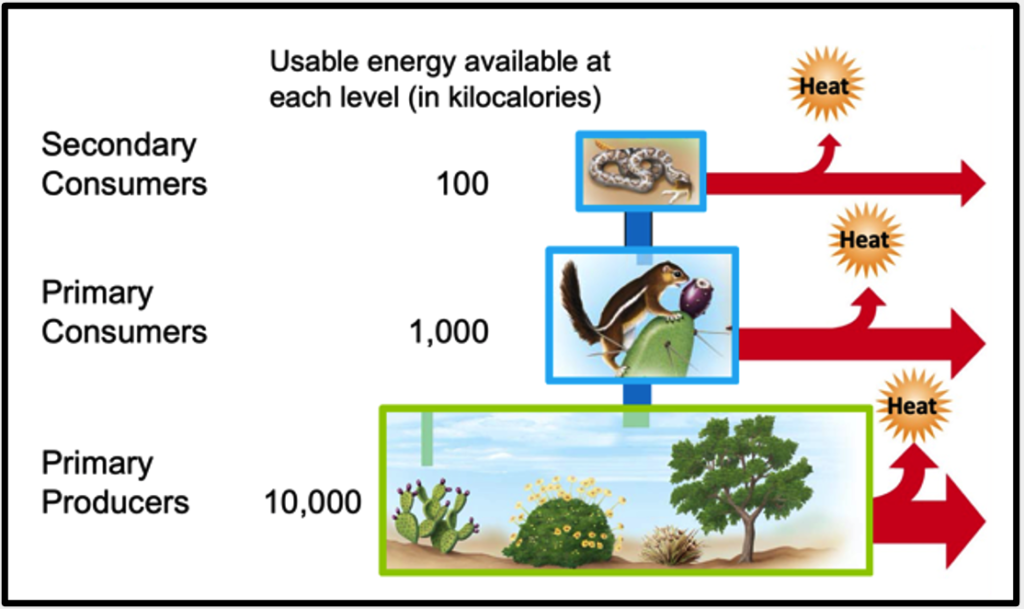
One major factor that limits the length of food chains is energy. Energy is lost as heat between each trophic level due to the second law of thermodynamics. Thus, after a limited number of trophic energy transfers, the amount of energy remaining in the food chain may not be great enough to support viable populations at yet a higher trophic level.
There is a problem when using food chains to accurately describe most ecosystems: even when all organisms are grouped into appropriate trophic levels, some of these organisms can feed on species from more than one trophic level; likewise, some of these organisms can be eaten by species from multiple trophic levels. In other words, the linear model of ecosystems, the food chain, is not completely descriptive of ecosystem structure.
A food web is a more realistic way to represent the relationships of primary producers, primary consumers, and higher-level consumers in an ecosystem. They can be thought of as illustrating how energy flows directionally through ecosystems, including how efficiently organisms acquire it, use it, and how much remains for use by other organisms.
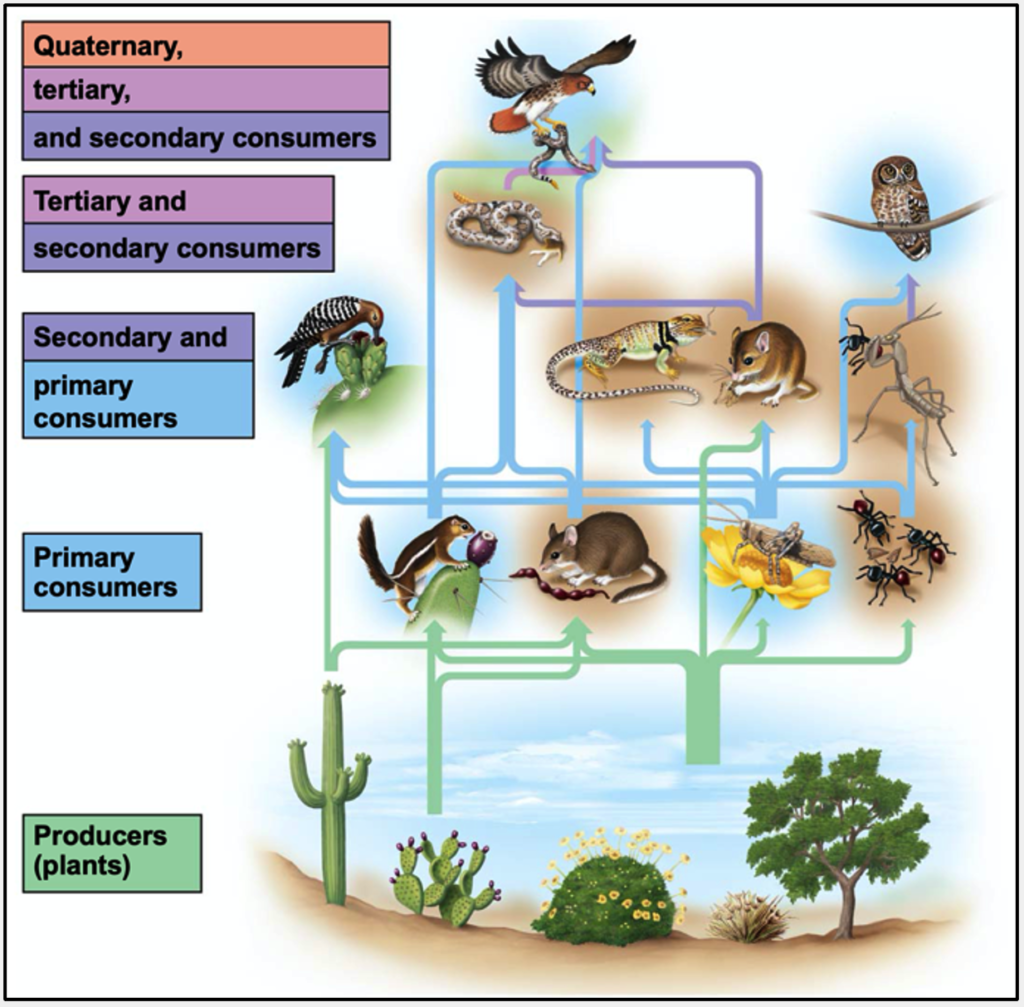
Text adapted from “Biology” by Openstax College. Download for free at: http://cnx.org/content/col11448/latest/
Adapted from an activity developed by Mary E. Allen and Mark L. Kuhlmann
Kelps are large brown marine algae that grow in extensive stands that reach the ocean’s surface and form a floating canopy. Kelp forests provide shelter and food for at least 750 species of animals and plants. Fish hide among kelp fronds to avoid predators, and search for smaller prey. The tall fronds rising to the surface provide substrate and protection for many invertebrate species. Others, like sea urchins and abalone, dine on the kelp blades. High-level predators also hunt for food in this species-rich and highly productive ecosystem.
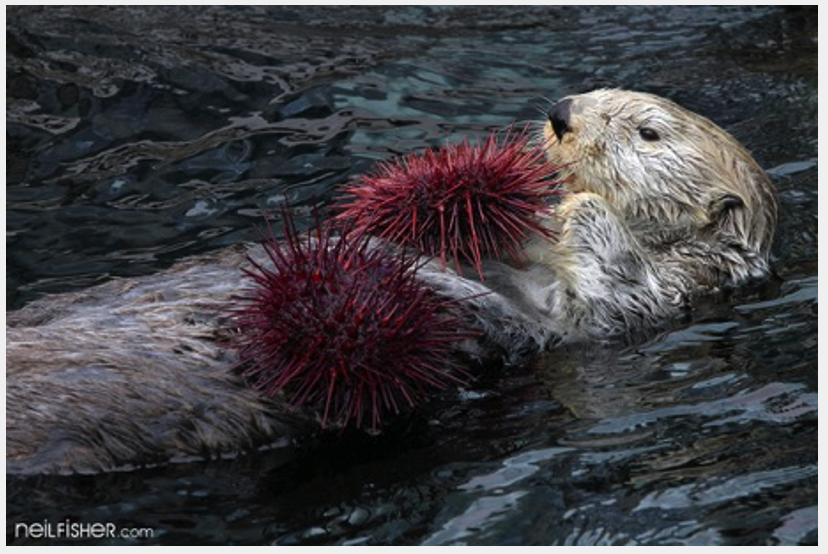
Like many ecosystems, the health of the kelp forest depends on a delicate balance between the organisms that make it their home. One of the important players in kelp forest ecosystems is the sea otter, Enhydra lutris,a small marine mammal that acts as a keystone species in this habitat. Without otters, marine herbivores – in particular, sea urchins – over-graze and destroy the kelp. In turn, this causes the ecosystem to collapse in a trophic cascade that affects a wide array of species.
This is exactly what happened to kelp forests along the coastlines of the Pacific Rim in the early 20th century. Otters were hunted extensively for their pelts, driving an estimated global population of as many as 300,000 individuals down to a mere 2,000 by 1911. In California, otters were extirpated except for a remnant population of 50 animals near Big Sur. With the disappearance of otters, kelp forest ecosystems collapsed, becoming urchin “barrens.”
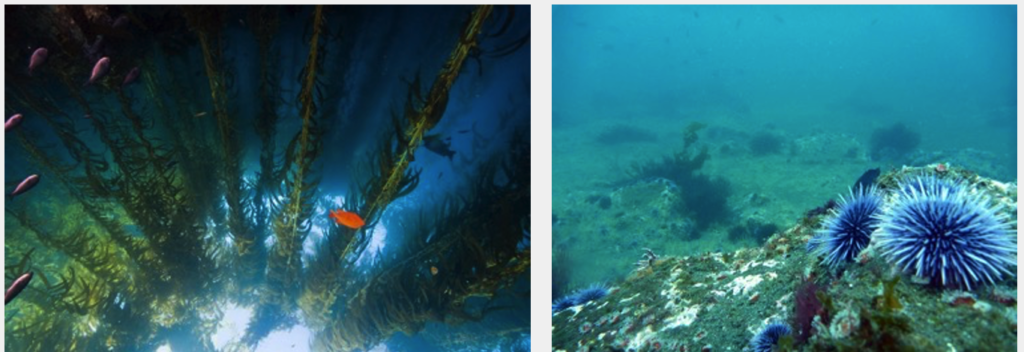
Fortunately, otters were given protection in 1911 under the International Fur Seal Treaty. Over the next several decades, sea otter populations recovered to about 150,000 individuals, occupying about two-thirds of their former range once again.
